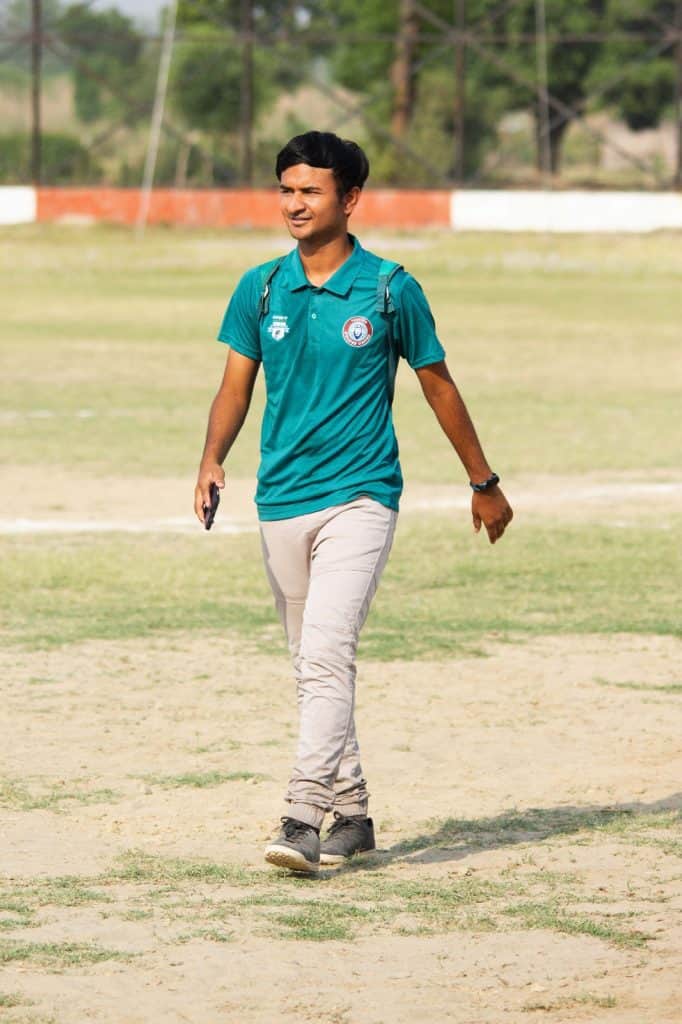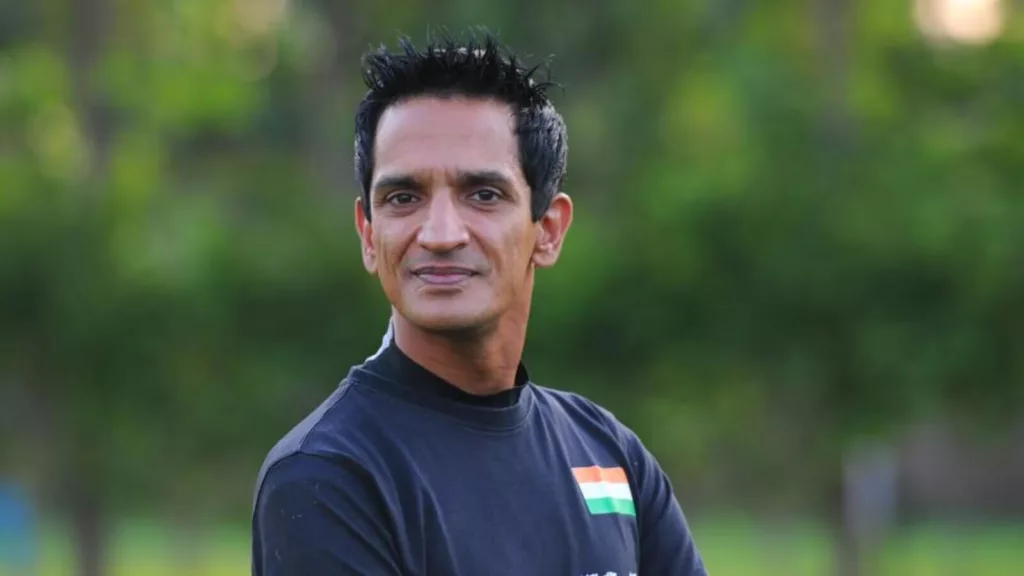As the Indian men’s football team struggled in the AFC Asian Cup, the perennially discussed yet absent component in Indian football surfaced prominently – the lack of grassroots development. When India faced a resounding defeat at the hands of a technically superior Uzbekistan during the Asian Cup, the spotlight once again turned to a longstanding issue in Indian football – the absence of a robust grassroots system. This deficiency proved more detrimental to Indian football than any other factor.

Despite being the world’s most populous nation, India failed to replicate the success seen in other areas of life within the realm of football. The disappointment in Qatar, the host of the Asian Cup, highlighted India’s poor quality of play and an inability to match the level of other Asian teams. The players’ inadequate positional awareness, their struggle to retain possession even briefly, and their inability to execute precise passes were glaring issues once again.
The age-old adage that having a commercial league alone is insufficient to elevate the national team’s performance became evident. In a sport known for its unpredictable outcomes, India’s shortcomings became more pronounced as countries like Iraq, marred by sectarian violence, secured upset victories against Asian powerhouse Japan, and Indonesia defeated Vietnam’s Golden Star Warriors – a team that India had defeated handily a decade ago but had since transformed into a formidable force, thanks to their commitment to grassroots football.
India, despite being a dominant force in the regional SAFF championship, struggled as its lack of cohesion became apparent when facing technically and tactically superior teams at the pinnacle of Asian football.
Whether operating as a defensive unit against Australia or attempting to transition into an attacking style against Uzbekistan by loosening its defensive shackles, India’s coach Igor Stimac has been unable to fulfill his desire for a commendable performance, even in defeat, ahead of the FIFA World Cup qualifiers in March.

While losing is a natural part of football, and goals, the ultimate achievement in the sport, can be scored in various circumstances, including against the run of play, India’s apparent inability to put up a strong resistance against formidable opponents raises questions about the country’s progress over the years. The discussions about the advancement of Indian football seem more like mere rhetoric.
As India finds itself without any goals in the tournament, showcasing a lack of sharpness in its attacking prowess, attention turns to the strategies employed by its opponents and the processes they have embraced to climb to the pinnacle of continental football. Uzbekistan’s emergence as a title contender has left many in India surprised and disbelieving, prompting a closer examination of their methods.
Read More: How Can India Qualify for the AFC Asian Cup 2023 Knockouts? Assessing All the Possible Situations
Analyzing the Football Disparity: Uzbekistan’s Grassroots Success versus India’s Structural Challenges
Following India’s 0-3 defeat at the hands of Uzbekistan, football analyst John Mathew accurately highlighted the existing technical, tactical, and experiential gap between India and the central Asian side. Describing India as the “bridesmaids” of Asian football, he emphasized the occasional nature of India’s presence among the elite teams in Asia, showcasing a significant disparity in pedigree.
Uzbekistan, entering the Asian Cup only in 1996, directed its passion, focus, and resources toward grassroots football, establishing academies as key developmental hubs. Players like Abbosbek Fayzullaev, a 20-year-old star from CSK Moscow, emerged from these well-structured grassroots systems.

The success of Uzbekistan as a formidable footballing nation is attributed largely to its organized grassroots system and academies. Notably, Uzbekistan holds the title of reigning U20 Asian champion and reached the pre-quarterfinals of the U20 FIFA World Cup in 2023.
Uzbekistan’s U17 and U23 teams have also come close to securing championships in Asia, with the U17 side advancing to the quarterfinals of the recent youth World Cup, narrowly losing to eventual runner-up France in the 83rd minute.
Unlike Uzbekistan’s commitment to enhancing its youth setup, India’s football system lacks structure, and responsibilities are often evaded. The prevailing approach in India focuses disproportionately on the top tier, with significant attention given to the commercial league, and the trickle-down effect to grassroots football appears ineffective.
Unveiling Football’s Heartland: Neeraj Kholiya Advocates for Grassroots Development in Rural India
In football, the individuals dedicated to working at the grassroots level, discovering talents in remote villages, and nurturing them into skilled players are a rare breed. Despite football being one of the most widely played sports throughout the country, there is a prevailing misconception that it is primarily centered around three regions – the North East, eastern India, and the southern peripheries.

Contrary to this belief, football enjoys significant popularity in lesser-known regions as well. For instance, it is thriving in rural areas of Uttar Pradesh, Madhya Pradesh, and Himachal Pradesh. Neeraj Kholiya, a passionate football advocate and owner of Techtro Swades United FC in the Himachal Pradesh League, sheds light on the untapped football potential in India.
Neeraj Kholiya, who runs a football academy in Lucknow grooming 125 children aged 4 to 8, notes a shift in culture. Parents now aspire for their children to become footballers, a departure from the past when people started playing the sport in their teens. He dispels the myth that there is no football in northern India, citing several clubs and promising talents in Himachal Pradesh.
Highlighting the vibrant football scene in rural Uttar Pradesh, Neeraj reveals the passion and financial investment from various quarters. Despite the lack of a formal league, football enthusiasts, including village heads and local entrepreneurs, ardently support the sport. Neeraj emphasizes the immense respect footballers receive in these regions, with villagers treating them as revered figures.

However, challenges such as infighting, limited opportunities, and a knowledge gap hinder the mainstreaming of football in these areas. Neeraj underscores the need for support and knowledge to establish academies and enroll teams in district youth leagues. Despite the obstacles, there is a palpable passion for football in rural India, waiting to be harnessed with the right guidance and resources.
Ranjit Bajaj: A Beacon for Grassroots Football in India Amidst Administrative Challenges
Ranjit Bajaj stands out as a rare figure in Indian football, dedicating his focus solely to grassroots development. A visit to his well-established academy in Mohali, Punjab, provides a glimpse into the extensive football activities underway at the Minerva Academy, all geared towards nurturing and producing technically and tactically adept Indian players. Notably, the academy attracts visitors from remote areas, emphasizing its influence beyond the immediate vicinity.
An illustrative incident involves two individuals from Uttar Pradesh, an unconventional football destination, seeking investment for their Jhansi Football Club. Bajaj, known for sponsoring such small-scale clubs, exemplifies his commitment to fortifying India’s grassroots system. Beyond managing his own academy, he has built a reputation that draws people in the hope of earning his patronage.

Ranjit Bajaj, emphasizing his commitment to grassroots football, expresses, “I have no interest in football administration nor do I want to own a club in ISL. I am a grassroots man. My idea is about producing technically sound, intelligent, and fit players for India who will help the country play at the World Cup one day, and for that, I need money, so I am running a club at the moment.” Bajaj is the driving force behind Minerva Academy, which accommodates 130 young trainees on scholarships, and Delhi FC, a club currently participating in the I-League.
Bajaj has assembled a dedicated team of coaches, led by Surinder Singh, who actively engages in talent scouting missions. At Minerva Academy, football is revered, and young players are immersed in a culture where they think, eat, dream, and imbibe football, fostering creativity. The commitment is evident as even 8-9-year-old boys spend their day honing shooting and set piece skills.
Certified Indian coaches oversee training sessions for different age groups and dedicated World Cup batches, incorporating military-like physical exercises to enhance endurance. The results are noteworthy, such as winning the prestigious Gothia Cup youth club world championship title in 2023 in Sweden.
Despite their significant contributions, Bajaj and his academy face challenges from the Indian football administration, which, lacking leaders with a deep understanding of the game, often disowns and complicates matters with bureaucratic red tape. This disconnect hampers India’s football development, highlighting the need for a more supportive and understanding approach from the governing bodies.




